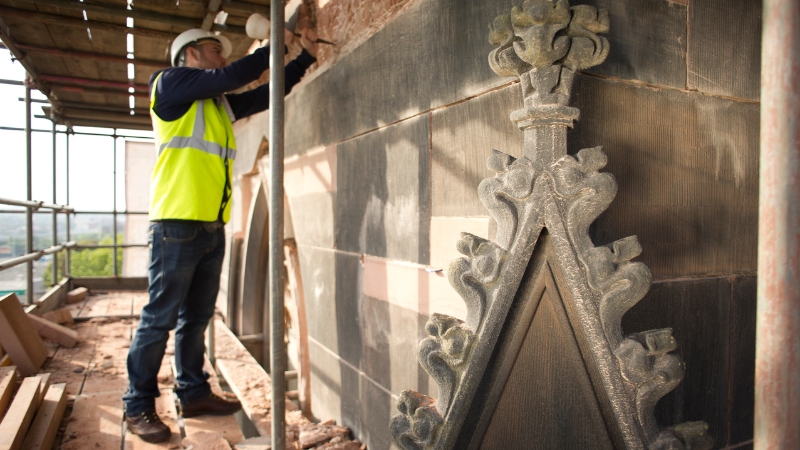Curious about how to protect your property from fire and water damage? Understanding the essentials of fire and water damage assessment is crucial for every property owner. This blog post unveils key insights to help you safeguard your investment effectively. From recognizing early warning signs to knowing the importance of prompt action, equip yourself with the knowledge needed to navigate potential risks confidently. Stay ahead of disasters and learn what it takes to assess, prevent, and mitigate fire and water damage like a pro.
Table of Contents
ToggleUnderstanding Fire Damage
Types of Fire Damage
Fire damage encompasses smoke damage, heat damage, and soot damage, each impacting properties uniquely. Smoke damage can permeate walls and furniture, while heat damage weakens structures. Soot damage leaves black residue on surfaces.
Understanding the diverse effects of smoke, heat, and soot damage is crucial for property owners. Structural integrity may be compromised, posing safety hazards. Health risks from inhaling smoke particles and soot residue must not be underestimated.
Property owners should prioritize a thorough assessment of all fire damage types for successful restoration. Neglecting any aspect could lead to incomplete repairs and lingering issues.
Immediate Steps to Take
Shut off the water supply immediately upon identifying the source to prevent further damage. This action helps mitigate potential water-related issues in addition to fire damage.
To safeguard valuables, swiftly relocate them from the affected area. Essential documents and sentimental items should be prioritized to minimize losses during the restoration process.
Engage a reputable water damage restoration service promptly to kickstart the assessment and recovery phase. Professional expertise ensures a comprehensive evaluation of the extent of water and fire damage.
Safety Precautions
In flooded areas, avoid wading through standing water due to potential electrical hazards or contaminants present. Prioritize safety by refraining from direct contact with hazardous substances.
Protective clothing and gear are essential when handling water-damaged spaces to prevent exposure to harmful substances. Gloves, masks, and boots are recommended for personal safety during cleanup efforts.
Before re-entering a water-exposed property, verify its structural stability to avoid accidents or collapses. Assessing the building’s condition is paramount for occupant safety post-water damage.
Documenting Damage
For insurance purposes, document water-damaged areas extensively through photographs and videos. Visual evidence aids in filing accurate claims and expediting the reimbursement process.
Create a detailed inventory of all damaged items, including furniture, appliances, and personal possessions. Itemizing losses facilitates insurance assessments and replacement procedures.
Maintain a meticulous timeline of events related to the fire and water damage incidents. This chronological record provides essential context for assessing damages accurately and planning effective restoration strategies.
Understanding Water Damage
Types of Water Damage
Water damage can be categorized into three types: clean water, gray water, and black water. Clean water comes from sources like a broken pipe, while gray water may contain contaminants like soap residue. Black water is highly unsanitary, often containing sewage or chemicals.
Sources of water damage vary and can include flooding, leaks, and burst pipes. Flooding from natural disasters or heavy rains can lead to significant water damage. Leaks from appliances or plumbing fixtures can cause gradual but persistent damage. Burst pipes are sudden and can result in extensive water damage.
Different types of water damage pose various health risks. Clean water may not carry health hazards initially, but if left untreated, it can promote mold growth. Gray water contains contaminants that can cause discomfort or illness upon exposure. Black water is the most hazardous, carrying pathogens and toxins that can pose severe health risks.
Immediate Steps to Take
- Act quickly to mitigate the damage by stopping the source of water if possible.
- Remove excess water using suction pumps or wet vacuums.
- Begin the drying process by opening windows, using fans, or dehumidifiers to prevent mold growth.
Safety Precautions
- Wear protective gear such as rubber gloves and boots when handling contaminated water.
- Avoid direct contact with contaminated areas to prevent skin irritation or infection.
- Turn off electricity in affected areas to reduce the risk of electrical hazards.
Documenting Damage
- Take photographs and videos of the affected areas before starting any cleanup or restoration work.
- Keep a detailed inventory of damaged items for insurance claims.
- Retain all receipts related to cleanup, repairs, and replacements for reimbursement purposes.
Conducting a Thorough Inspection
Interior Inspection
Property owners should examine walls, ceilings, and floors meticulously for water intrusion or fire damage. Mold growth can be a quick consequence in damp environments, so it’s crucial to check for any signs. Assessing the condition of electrical systems and appliances is essential to address safety concerns promptly.
Exterior Inspection
When conducting an exterior inspection, it’s vital to inspect the roof, gutters, and downspouts for any damage that could result in water intrusion. Evaluating the foundation and exterior walls for cracks or signs of structural failure is imperative to prevent further damage. Property owners should also be on the lookout for debris or hazards that might pose risks during the restoration process.
- Look for signs of water intrusion or fire damage
- Check for mold growth in damp areas
- Assess electrical systems and appliances for safety
Using Technology
Utilizing technology can enhance the efficiency of damage assessments. Property owners can use moisture meters to detect hidden water damage within walls and floors accurately. Thermal imaging cameras are beneficial in identifying areas of heat loss or moisture accumulation that may not be visible to the naked eye. Drone technology can also be employed for aerial assessments of large properties or hard-to-reach areas.
- Moisture meters for detecting hidden water damage
- Thermal imaging cameras for identifying heat loss
- Drones for aerial assessments of large properties
Professional Assessments
Engaging certified professionals who specialize in fire and water damage assessments is highly recommended. These experts possess the necessary skills to uncover hidden damages that may not be apparent to untrained individuals. Property owners should trust their recommendations for remediation and restoration based on thorough evaluations conducted by these professionals.
- Certified professionals specializing in fire and water damage assessments
- Experts uncover hidden damages invisible to untrained eyes
- Trust professionals’ recommendations for remediation based on thorough evaluations
Importance of Assessment Reports
Key Elements in Reports
Property owners can expect detailed descriptions outlining the extent of fire and water damage, specifying the affected areas precisely. The reports also include recommendations for repairs, restoration timelines, and estimated costs for the necessary work. Documentation of any hazardous materials discovered during the assessment will be provided.
When reviewing assessment reports, it is crucial to understand the terminology used to describe the damage accurately. By focusing on the key findings and recommendations, property owners can effectively prioritize their restoration efforts based on urgency. If any part of the report seems unclear or raises concerns, seeking clarification from professionals is recommended.
How to Interpret Reports
- Detailed descriptions of damage areas
- Recommendations for repairs and restoration
- Documentation of hazardous materials
Benefits for Property Owners
Property owners benefit from assessment reports by gaining a clear understanding of the damage’s extent, aiding in making informed decisions regarding repairs and restoration. These reports are instrumental in supporting insurance claims, ensuring fair compensation for the damages incurred. By having a comprehensive assessment report, property owners can plan restoration effectively by knowing the full scope of work required.
Best Practices for Communication
Communicating with Homeowners
Property owners should provide clear and concise explanations of the assessment findings to homeowners. Address any concerns or questions promptly, ensuring they understand the extent of damage. By offering guidance on next steps, homeowners can take timely action for effective recovery.
When addressing homeowner concerns, it is crucial to empathize with their situation and provide reassurance. Clear communication about the damage and restoration process helps build trust and transparency. Offering detailed explanations can ease their anxieties and uncertainties.
- Provide clear and concise explanations
- Address concerns promptly
- Offer guidance on next steps
Coordinating with Emergency Services
Effective communication with local fire and water damage response teams is vital for immediate assistance. Sharing assessment findings with emergency services enables them to tailor their response strategies accordingly. Collaboration ensures that safety protocols are strictly followed during the recovery process.
When coordinating with emergency services, property owners should share assessment reports promptly to facilitate a coordinated response. Timely communication allows for a swift and efficient deployment of resources to mitigate further damage.
- Establish communication with response teams
- Share assessment findings promptly
- Collaborate to ensure safety protocols
Working with Insurance Companies
Property owners must prepare detailed assessment reports to substantiate insurance claims accurately. Understanding policy coverage and limitations related to fire and water damage is essential for a smooth claims process. Maintaining open communication with insurance adjusters expedites the claims process and ensures timely reimbursement.
When working with insurance companies, property owners should be proactive in providing all necessary documentation. Open communication helps clarify any ambiguities in the policy coverage, preventing delays in claim processing.
- Prepare detailed assessment reports
- Understand policy coverage
- Maintain open communication with adjusters
Closing Thoughts
Assessing fire and water damage is crucial for every property owner. By understanding the nuances of each type of damage, conducting thorough inspections, and prioritizing clear communication, you can ensure a comprehensive assessment process. Assessment reports play a vital role in documenting the extent of damage and guiding restoration efforts effectively. Following best practices outlined in this guide will not only streamline the assessment process but also set the stage for efficient restoration and recovery.
Remember, proactive damage assessment is key to minimizing long-term repercussions and ensuring the safety and value of your property. By staying informed, communicating effectively with all involved parties, and acting promptly on assessment findings, you can navigate the challenges of fire and water damage with confidence. Your diligence today will pave the way for a swift and successful restoration tomorrow.
Frequently Asked Questions
1. What are the common causes of fire damage?
Fire damage can result from electrical faults, cooking accidents, smoking, or candles left unattended. It can also be caused by heating systems, flammable liquids, or natural disasters like wildfires.
2. How does water damage impact a property?
Water damage can lead to structural issues, mold growth, and compromised indoor air quality. It can damage furniture, electronics, and personal belongings. Immediate mitigation is crucial to prevent further harm.
3. Why is conducting a thorough inspection important after a fire or water incident?
A thorough inspection helps assess the extent of damage, identify safety hazards, and determine the necessary repairs. It ensures that no hidden issues are overlooked, allowing for a comprehensive restoration plan to be developed.
4. What information should be included in assessment reports for fire and water damage?
Assessment reports should detail the cause of the damage, extent of affected areas, recommended restoration procedures, and estimated costs. They serve as a roadmap for restoration professionals and insurance adjusters to follow during the recovery process.
5. How can effective communication benefit property owners during fire and water damage restoration?
Clear communication ensures property owners are informed about the restoration process, timelines, and any challenges that may arise. It fosters transparency between all involved parties, leading to a smoother restoration experience and timely completion.
Shield Your Home from Devastation with Garcia Plumbing and Home Restoration’s Fire and Water Damage Assessment!
Worried about the potential havoc fire or water can wreak on your home? You’re not alone. At Garcia Plumbing and Home Restoration, we know how overwhelming it can be to face the aftermath of fire or water damage. That’s why our dedicated team is here to provide thorough and reliable damage assessments that don’t just identify the problem—they pave the way for complete restoration and peace of mind.
Imagine the relief of knowing your home is in the hands of experts trusted throughout Contra Costa County. We don’t just assess the damage; we offer solutions that safeguard your home’s future. Our seasoned professionals bring years of experience, ensuring that every corner of your home is inspected and protected.
Don’t wait until it’s too late. Let Garcia Plumbing and Home Restoration be your first call in the face of disaster. Reach out today for a comprehensive fire and water damage assessment, and take the first step towards restoring your home—and your peace of mind!




